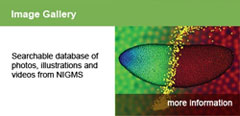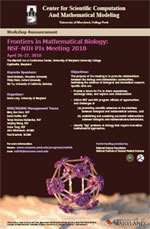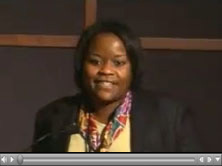It’s safe to say that the discovery that human non-embryonic cells can be reprogrammed to an embryonic stem cell-like state has created a lot of excitement in the scientific community. These cells provide a wonderful opportunity to investigate the fundamental molecular and genetic properties of pluripotent cells.
Last month, the NIGMS Council approved a new grant program that will focus on studying the basic biology of pluripotency and reprogramming, with an emphasis on human induced pluripotent stem (iPS) cells. This initiative will use the program project (P01) mechanism to support collaborative research that advances a comprehensive understanding of the basic biology of pluripotency, the molecular events and mechanisms of reprogramming, and the epigenetics and epigenomics of the pluripotent and reprogrammed states.
Once the funding opportunity announcement has been published in the NIH Guide later this summer, we will post it on the Feedback Loop site. In the meantime, I encourage you to start talking with potential collaborators and thinking about applying.



 Last week, I attended the PI’s meeting for the Joint DMS/NIGMS Initiative to Support Research in the Area of Mathematical Biology, a program managed by us and NSF’s Division of Mathematical Sciences. A key goal of the program is to bring mathematicians and new mathematical approaches into the core of biological and biomedical research.
Last week, I attended the PI’s meeting for the Joint DMS/NIGMS Initiative to Support Research in the Area of Mathematical Biology, a program managed by us and NSF’s Division of Mathematical Sciences. A key goal of the program is to bring mathematicians and new mathematical approaches into the core of biological and biomedical research. Registration is now open for our second Quantitative and Systems Pharmacology Workshop, which will be held September 9-10 on the NIH campus in Bethesda, MD. The meeting is intended primarily for pharmacologists, pharmacokinetic/pharmacodynamic modelers, systems biologists and others working in fields relevant to this emerging discipline.
Registration is now open for our second Quantitative and Systems Pharmacology Workshop, which will be held September 9-10 on the NIH campus in Bethesda, MD. The meeting is intended primarily for pharmacologists, pharmacokinetic/pharmacodynamic modelers, systems biologists and others working in fields relevant to this emerging discipline. As you may recall from an earlier Feedback Loop message, NIGMS hosted its first workshop to help postdocs successfully transition to independent positions. We just posted videos for all the presentations.
As you may recall from an earlier Feedback Loop message, NIGMS hosted its first workshop to help postdocs successfully transition to independent positions. We just posted videos for all the presentations.